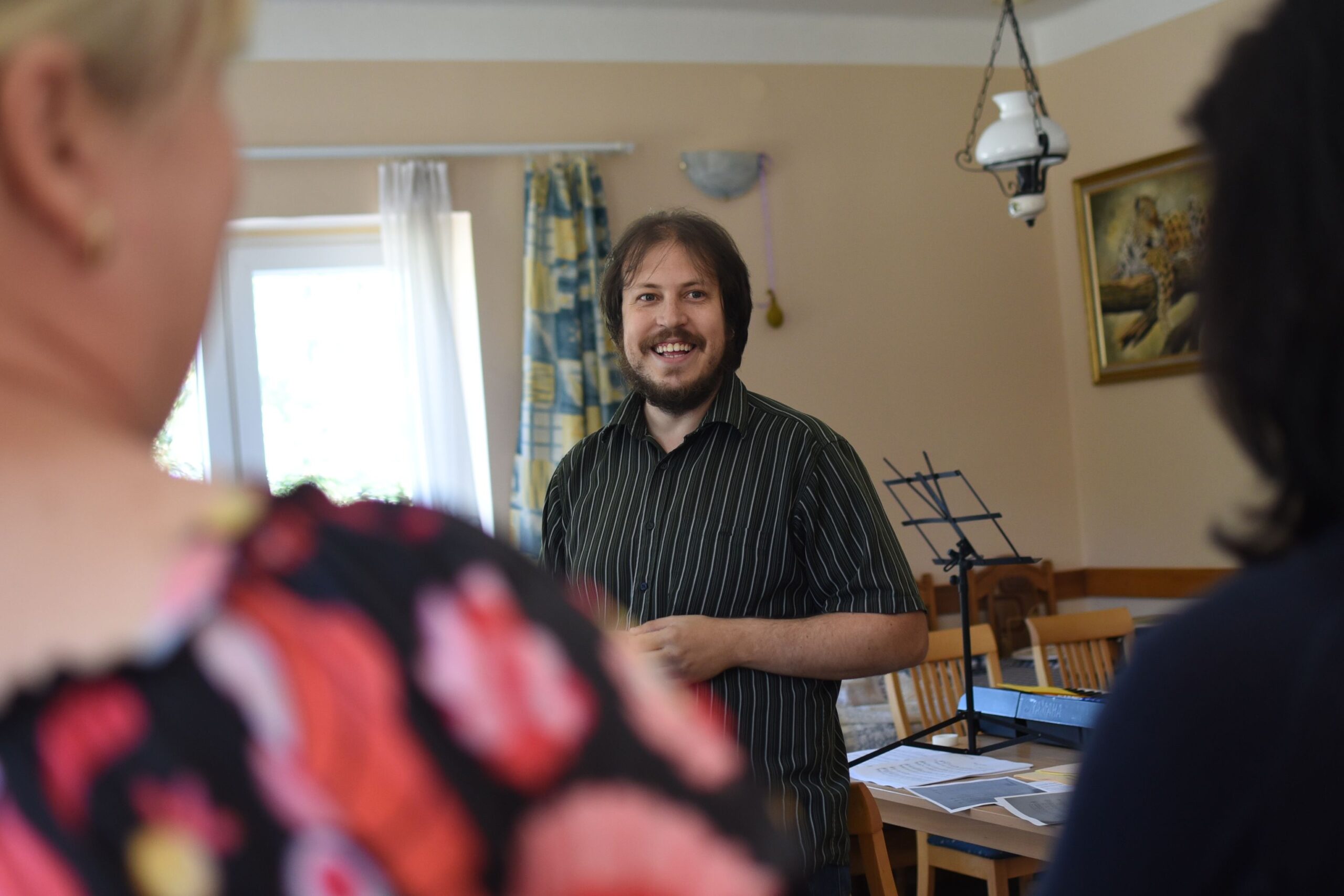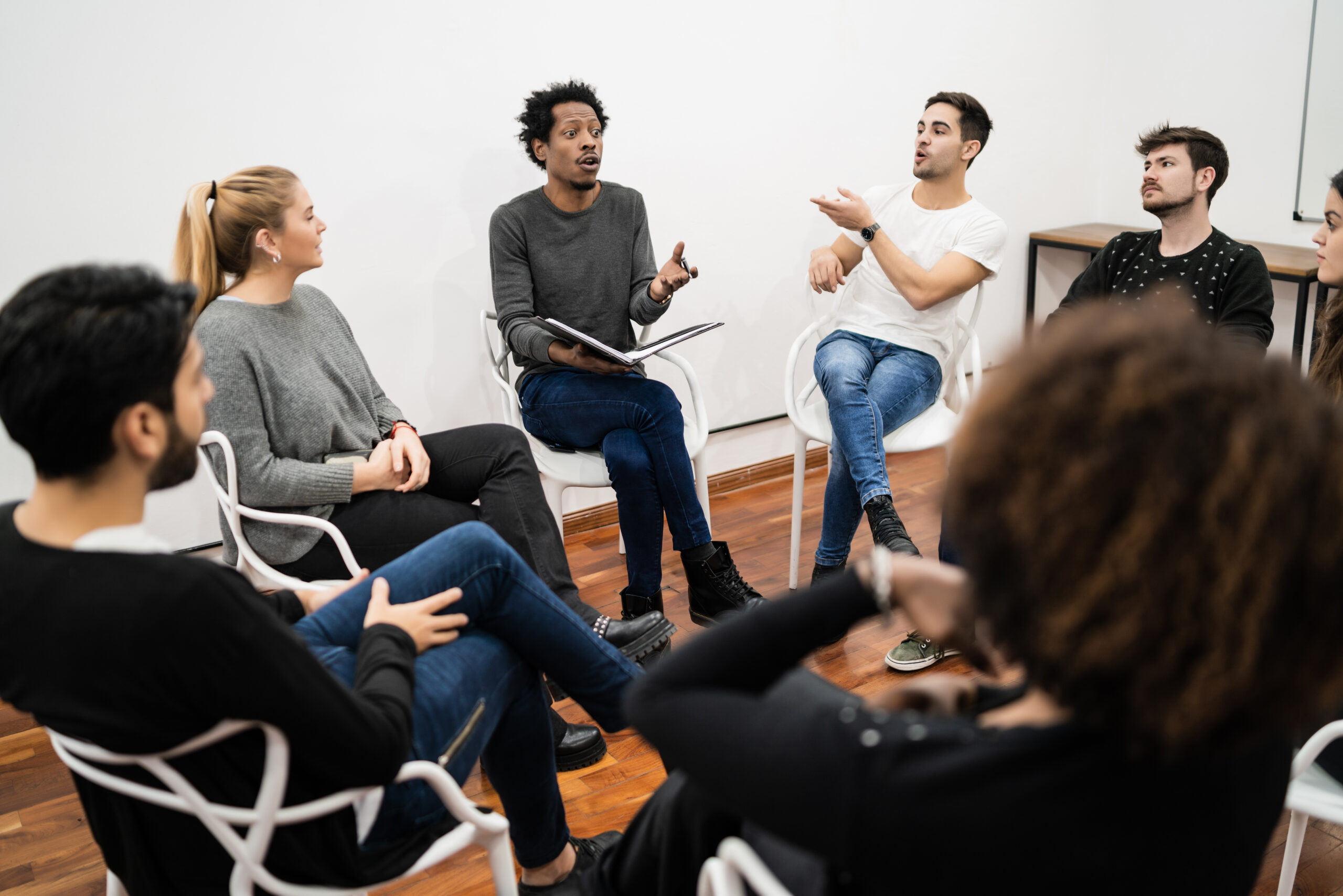Mamma Mia Tralala
35

Category
vocal
Age
12+
Number of participants
15-
Duration
approx. 20 min.
Working method
group work
Musical abilities of the trainers
1 2 34 5 6
Equipment and instruments
- music player / app to play the song
Competences
- improvisation
- creativity
- collaboration
- attention
- cooperation
- concentration
- hearing sensitivity
Mamma Mia Tralala
Sing a popular and worldwide known song arranged in
an Italian folk singing style (Trallalero Genovese) to follow
with the Italian culture immersion
AIM
The aim is to try and practice some different rhythm/singing techniques (body percussion, trallalero singing and singing in a foreign language)and improve the pitching.
Description
- First of all they will watch a “Trallalero” song in youtube (see resources) and also “Mamma mia” (see resources)
- The facilitator will explain about the context and the roles in Trallalero singing techniques, also they will experiment with the singing techniques before performing them.
- After, they will be divided in 5 groups, each one for a voice role (guitar, basso etc.) and they will sing “Mamma mia” in a Trallalero style version.
- The facilitator will give them the tone and the rhythm and they will perform and change periodically the roles.
“Ideas about Trallalero”:
Tenor: sings the melody
Contralto: sings a second melody in falsetto
Baritono: does a tra-la-la constant rhythm
Chitarra: does also a tra-la-la constant rhythm
Basso: maintains the low note mainly
Mamma mia’s Trallalero version:
Tenor: sings the melody
Contralto: sings the melody with “bocca chiusa” with body percussion
Baritono: does a “mamma mia” constant rhythm
Chitarra: does a “mamma mia” constant rhythm in a higher pitch
Basso: maintains the low note mainly
About Trallalero:
Trallalero is a form of polyphonic Traditional Folk Music originating in the Ligurian region of Genoa, in northern Italy. Although the first written and oral sources of this musical form are from around the mid-19th century, it is reasonable to assume an earlier origin. As the names of parts suggest, the imitation of instrumental styles replaces traditional vocal polyphony which is a distinguishing feature of this genre.
Trallalero groups are almost exclusively formed by males and are called squadra (Italian for „team”). They are usually made up of 7, 9 or 12 elements. Every „squadra” has 5 kinds of voices: a tenor (called primmo) who intones the chant and chooses the right key, a contralto (contræto/bagascetta/segòndo) who sings in falsetto, a baritone (controbasso) who has the task of keeping the rhythm of the trallalero constant, a voice called chitâra that has a rhythmic function obtained by placing the back of the hand in front of the mouth, which serves to accompany the singing with rapid succession of notes that imitate the sound of a plucked string instrument, and various bass voices.
Comments for facilitators
I’ve been cheated by you since I don’t know when
So I made up my mind, it must come to an end
Look at me now, will I ever learn
I don’t know how, but I suddenly lose control
There’s a fire within my soul
and I can hear a bell ring
(One more look) and I forget everything, whoa
Mamma mia, here I go again
My, my, how can I resist you?
Mamma mia, does it show again
My, my, just how much I’ve missed you?
Yes, I’ve been brokenhearted
Blue since the day we parted
Why, why did I ever let you go?
Mamma mia, now I really know
My, my, I could never let you go
I’ve been angry and sad about things that you do
I can’t count all the times that I’ve told you we’re through
And when you go, when you slam the door
I think you know that you won’t be away too long
You know that I’m not that strong
and I can hear a bell ring
(One more look) and I forget everything, whoa
Mamma mia, here I go again
My, my, how can I resist you?
Mamma mia, does it show again
My, my, just how much I’ve missed you?
Yes, I’ve been brokenhearted
Blue since the day we parted
Why, why did I ever let you go?
Mamma mia, even if I say
Bye-bye, leave me now or never
Mamma mia, it’s a game we play
Bye-bye doesn’t mean forever
Mamma mia, here I go again…





Recent Comments